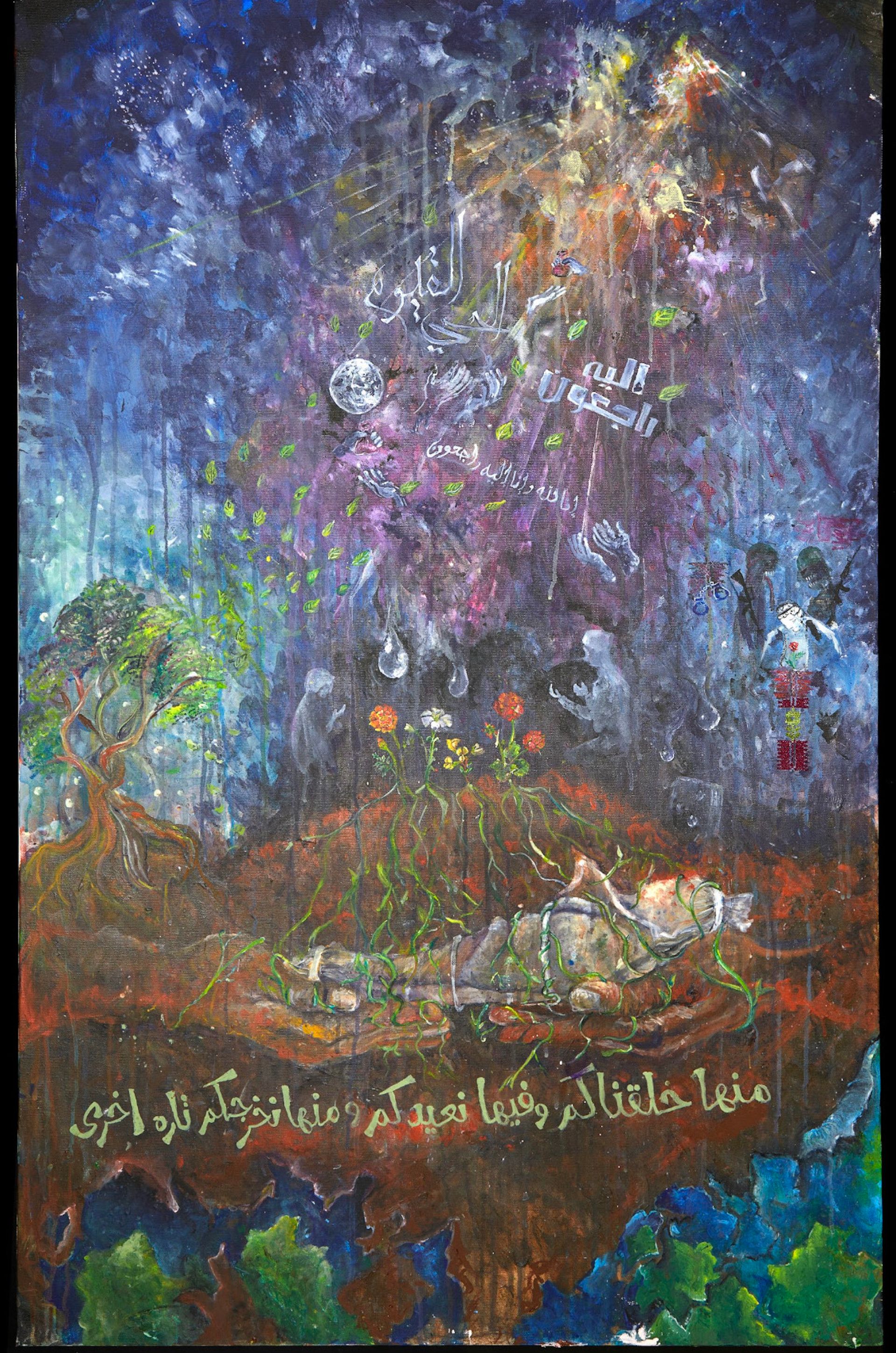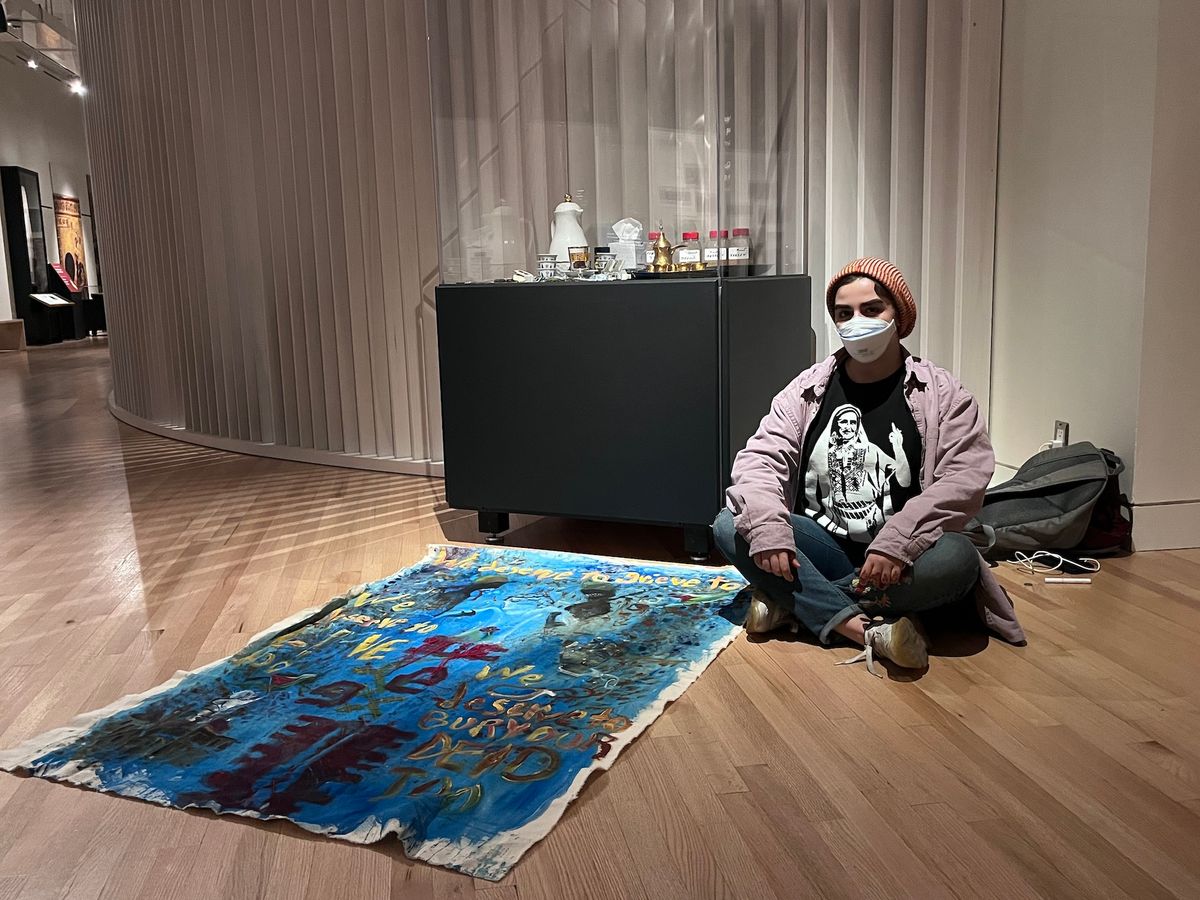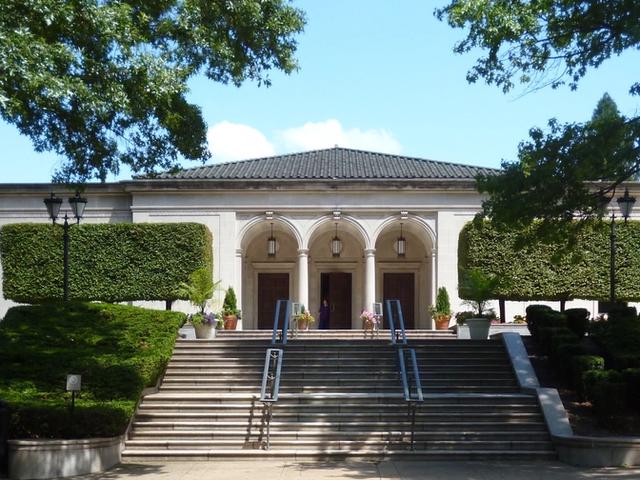An exhibition at the Royal Ontario Museum (ROM) caught up in the tensions around the war in Gaza re-opened on Friday (3 November) after it was closed because of an overnight sit-in by a Palestinian American artist who successfully reversed what she called the museum’s “censorship and alteration” of her work.
The exhibition, Death: Life’s Greatest Mystery, which examines different cultures’ traditions around death and burial, was developed and previously presented by the Field Museum in Chicago. The exhibition had been scheduled to open at the ROM in Toronto on 28 October, “soon after the tragic events that began on 7 October and the ongoing conflict, pain and suffering”, David McKay, a spokesman for ROM, says, referring to the Hamas terrorist attack in which around 1,400 Israelis were killed and around 220 were taken hostage, and the Israeli military’s retaliatory declaration of war on Hamas and invasion of the Gaza Strip, in which more than 9,700 people have reportedly been killed, according to Gaza Ministry of Health figures cited by BBC News.
In response to the crisis, the ROM decided to make what they called “modifications” to the exhibition, including to a display of art and educational information devoted to traditions of green burial.
When the Michigan-based Palestinian American artist Jenin Yaseen was commissioned earlier this year by the Field Museum to create a piece that speaks to what she calls “the Islamic sacred tradition of green burials”, she says her work was well received by a diverse audience and a “supportive staff”. In contrast, she says she was “shocked and humiliated” by her treatment at ROM.
On 25 October, two days before the exhibition’s scheduled opening, Yaseen says she and her collaborators on the display—the Palestinian scholar Dina Omar, the community organiser Malak Kanan and the death doula Sameera Hosam—were asked to join a Zoom call with the ROM’s associate vice president of interpretation, Swarupa Anila, and the museum’s curator of the Islamic world, Fahmida Suleman. The ROM staffers shared a document during the Zoom call that highlighted specific words they wanted removed because of “tensions” around the situation in Israel and Palestine, Yaseen says. These included the words “Palestine”, “exile” and the name of the West Bank village Hosam is from, Turmusaya.
The display in question was twofold. One part featured a photographic reproduction of a painting by Yaseen, a self-taught artist inspired by the murals of her parents’ hometown of Nablus in the West Bank, depicting the realities of death and burial in Palestine. An accompanying display featured objects and rituals related to mourning, including a traditional tea set belonging to Omar’s family, as well as spices that belonged to Hosam’s father, a chef who cooked large meals for mourners at funerals. Also included was a label with text in English about “how we grieve as a community process”, Yaseen says.
The artist says she felt pressured by the ROM’s representatives to cover a section of her painting “where I conveyed how practising such traditions is a privilege for Palestinians, as the [Israel Defense Forces] often holds Palestinian dead bodies hostage, which prevents families from burying them”. The part of the painting in question features two small figures of Israeli soldiers and a traditional Palestinian embroidery motif symbolising burial and death.
Yaseen adds: “They told us that if we did not agree to their terms, they would have to pull out the display—as well as a display on Jewish mourning rituals [created by a curator for the Field Museum] to be ‘fair’ to ‘both sides’.” The museum’s statement does not address this particular allegation.
The next day, Yaseen and her collaborators on the display flew to Toronto and, when they arrived at the exhibition opening on the morning of 27 October, “We were shocked at the changes they’d made,” says Yaseen. She says ROM staff had replaced “Palestine” with “West Bank”, kept the word “exile” and the name of the village, and that the reproduction of her painting had been significantly cropped from the image that had appeared in the display at the Field Museum. She claims changes had also been made to the text accompanying the display on Jewish mourning rituals.

Jenin Yaseen's original, which is reproduced in a display in the exhibition Death: Life’s Greatest Mystery Courtesy the artist
In a statement, a ROM spokesperson said: “Given the current heightened sensitivities around the Israel-Hamas conflict and the pain and suffering of all involved communities, ROM had proposed modifications to some exhibition content in advance of the public opening. These were intended to keep the focus on the cultural practices, rituals and science surrounding life and death, rather than current events.”
After leaving the opening, the collaborators on the Palestinian display received an email from the museum’s deputy director of engagement, Jennifer Wild, giving them around two hours to either approve of the display as it then appeared or withdraw their work entirely from the exhibition, in which event ROM staff would “return the case installation to the Field Museum”.
In response, Yaseen went with a supporter to an art supply store and created a new painting in response to the situation, including images of the Israeli soldiers and traditional grave motif. She brought it with her to the ROM, accompanied by Hosam, and began a protest sit-in inside the exhibition that would ultimately last 18 hours.
The pair was closely watched by two security guards and given water and crackers by Kelly Harper, manager of visitor experience at ROM, as she attempted to negotiate with them, Yaseen says. Around 50 supporters rallied outside the museum in solidarity. The next morning when the museum opened, staff closed the exhibition and Harper told the pair that they would display the uncropped image of Yaseen’s painting with a disclaimer. As the exhibition re-opened on 3 November, a panel hung next to the Palestinian display, stating in English and French: “The nearby panel includes an image dealing with death during conflict that some might find disturbing. If you prefer not to see this content, go past this area.”
The ROM issued an apology for the “pain and frustration” caused and said it is “committed to more clearly sharing the museum’s belief in the universal value of all lives and recognition of the immense suffering resulting from the ongoing conflict”.
For Yaseen, the whole experience was a pyrrhic victory. “I’m happy I won but I should never have been put in that position of having to stay in a museum overnight.”



